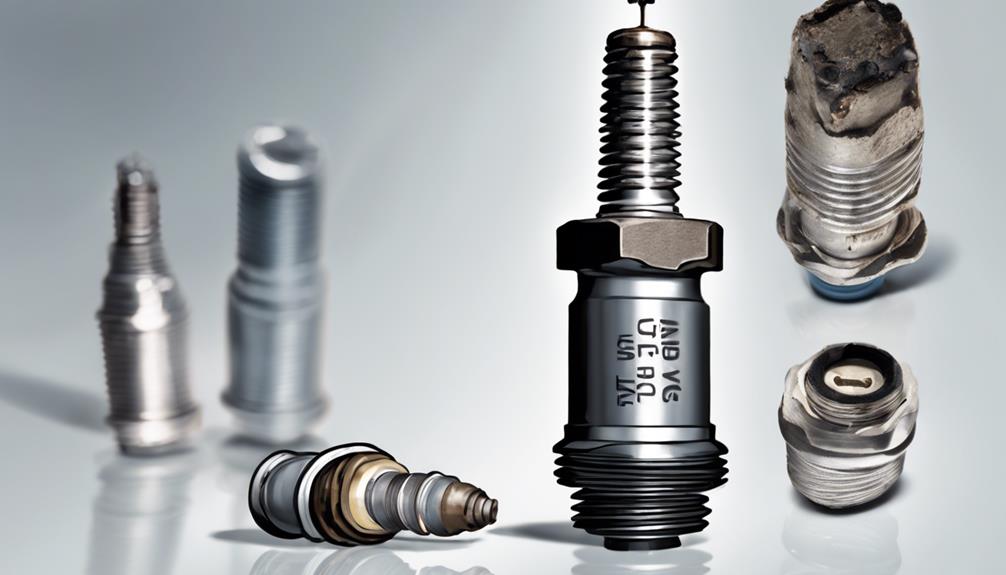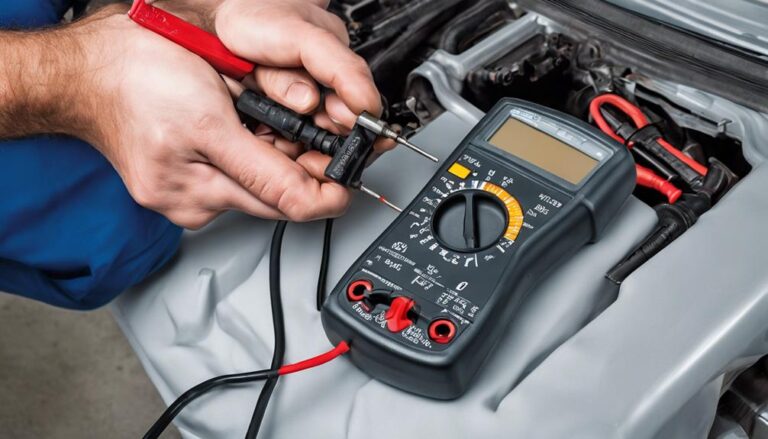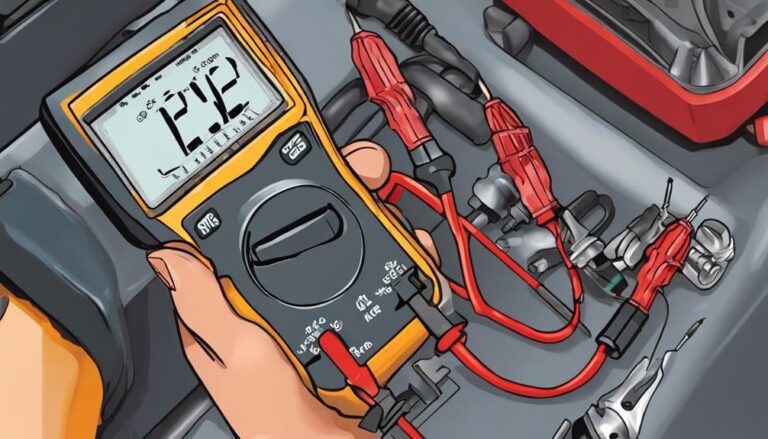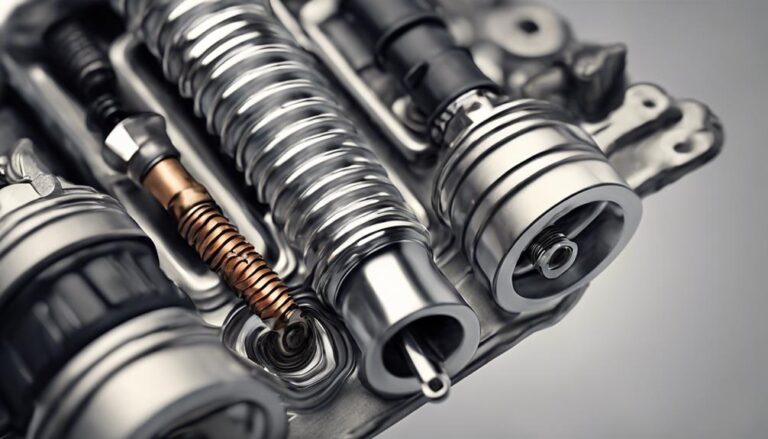5 Common Signs of Spark Plug and Coil Wear
If your vehicle is experiencing difficulty starting, sputtery starts, engine misfiring, reduced power output, or backfiring, it might be time to pay closer attention to your spark plugs and ignition coils.
These common signs of wear can impact your car's performance and efficiency more than you realize.
By understanding these indicators, you can potentially save yourself from costly repairs down the road.
Key Takeaways
- Misfires or rough idling signal spark plug or coil wear.
- Reduced fuel efficiency and engine performance indicate potential issues.
- Recognizing signs early prevents further damage and costly repairs.
- Regular inspection and maintenance enhance vehicle reliability and performance.
Symptoms of Worn-Out Spark Plugs
If you notice your vehicle experiencing misfires or rough idling, it could be a sign of worn-out spark plugs. Ignoring these symptoms can lead to decreased fuel efficiency and poor engine performance.
To address this issue, consider these spark plug maintenance tips. Firstly, ensure you're using the correct type of spark plug for your vehicle. Common misconceptions about spark plug wear include thinking that all spark plugs last the same amount of time. In reality, factors like driving habits and engine conditions can affect their lifespan.
It's recommended to inspect your spark plugs regularly for any signs of wear, such as carbon deposits or erosion. By replacing old spark plugs, you can improve fuel economy, engine power, and overall vehicle performance.
Effects of Faulty Ignition Coils
Faulty ignition coils can significantly impact your vehicle's performance, leading to engine misfires and decreased power output. When your ignition coils are failing, several effects on your vehicle's performance can be noticed:
- Engine misfires: Faulty ignition coils can cause your engine to misfire, resulting in a rough idle, hesitation, or shaking while driving.
- Reduced power output: Failing ignition coils can lead to a decrease in engine power, making acceleration sluggish and overall performance compromised.
- Decreased fuel efficiency: Ignition coil issues can affect the combustion process, leading to inefficient fuel burning and decreased miles per gallon.
- Backfiring: Unburnt fuel can enter the exhaust system and ignite, causing loud noises or pops, indicating potential ignition coil problems.
- Starting and stalling issues: Ignition coil failure may prevent your vehicle from starting altogether or cause unexpected stalling while driving, affecting overall engine performance.
Regular maintenance and prompt replacement of faulty ignition coils are crucial to ensure optimal engine performance and fuel efficiency.
Indications of Spark Plug Deterioration
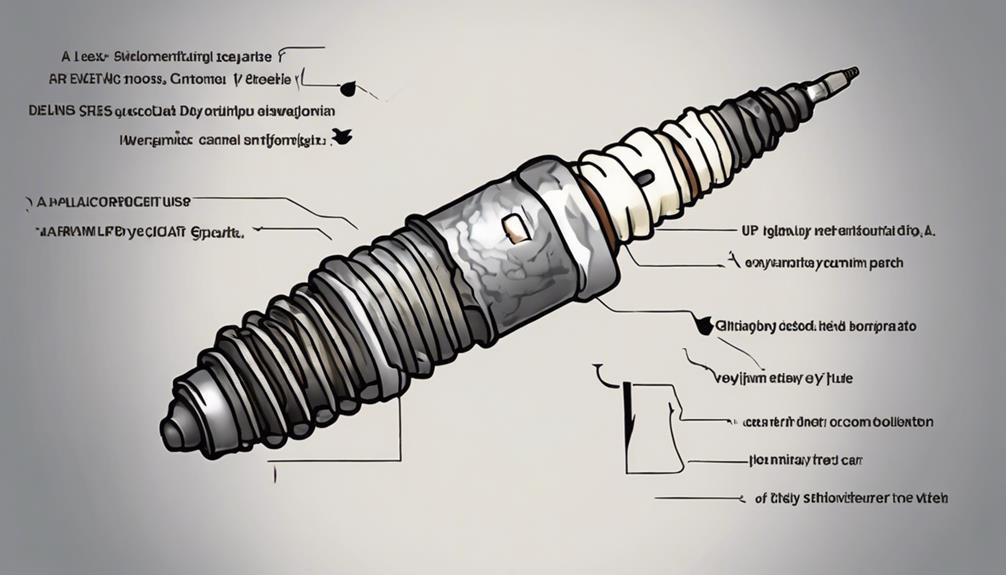
Detecting signs of spark plug deterioration is crucial for maintaining optimal engine performance and fuel efficiency in your vehicle. Proper spark plug maintenance is vital to ensure your engine runs smoothly.
Ignition system troubleshooting often begins with checking the condition of your spark plugs. If your spark plugs are worn out, they can cause misfiring, rough idling, and poor acceleration. Carbon buildup on spark plugs can also impact engine performance and fuel efficiency.
Damaged or fouled spark plugs may lead to increased emissions and even failed smog tests. To prevent these issues, regular inspection of spark plugs is necessary. Spark plugs should typically be replaced every 30,000 to 100,000 miles depending on the type.
Signs of Coil Wear in Vehicles
Inspecting the ignition coils on your vehicle for cracks, corrosion, or physical damage is crucial in identifying signs of coil wear that could impact engine performance and efficiency. Here are some key diagnostic methods and preventive maintenance techniques to help you recognize coil wear early on:
- Perform Regular Visual Inspections: Check for any visible cracks, corrosion, or other physical damage on the ignition coils.
- Utilize Diagnostic Tools: Use diagnostic tools like an OBD-II scanner to check for error codes related to ignition system malfunctions.
- Monitor Engine Performance: Keep an eye out for engine misfires, rough idling, or difficulty starting, as these could be signs of coil wear.
- Address Check Engine Light: If the check engine light illuminates on the dashboard, it could indicate issues with the ignition coils that need attention.
- Consider Regular Coil Replacements: To extend the lifespan of your ignition system, consider replacing the ignition coils at recommended intervals to prevent costly repairs and potential engine damage.
Recognizing Spark Plug and Coil Issues
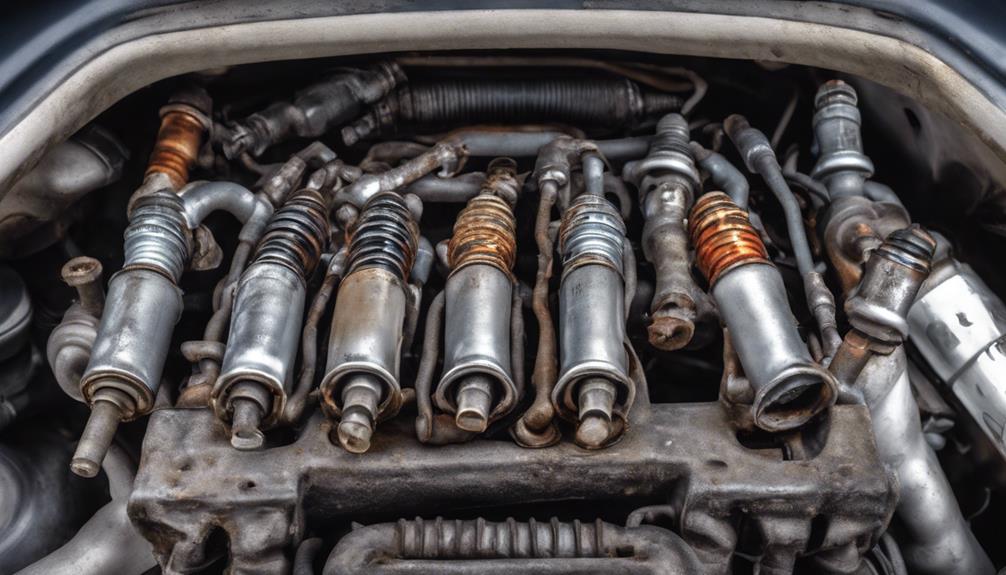
To properly address potential issues with your vehicle's ignition system, it's essential to be able to recognize common signs of wear in both the spark plugs and ignition coils. Ignition problems can arise from spark plug wear, leading to misfires, reduced fuel efficiency, and engine performance issues. Symptoms of spark plug wear include difficulty starting, rough engine sounds, and poor acceleration.
On the other hand, coil wear can cause rough idling, stalling, and even backfiring, engine vibrations, and increased emissions. Regular inspection of spark plugs and coils is crucial to detect wear early, preventing costly repairs. When neglected, these issues can significantly impact your vehicle's performance and pose safety concerns due to potential stalling or misfiring.
Utilizing diagnostic tools for routine checks and following maintenance tips such as replacing spark plugs and coils at recommended intervals can help maintain optimal ignition system functionality, ensuring a smooth and safe driving experience.
Frequently Asked Questions
How Do I Know if My Ignition Coil or Spark Plug Is Bad?
If your ignition coil or spark plug is bad, you may notice engine misfires, hard starts, and loss of power. Ignition system maintenance is vital. Prompt attention to engine performance issues can prevent costly repairs.
What Are the Symptoms of a Bad Spark Plug?
When your car falters, your engine stumbles, hesitates. Fuel wasted, power lost, signs of a bad spark plug. Don't let inefficiency hold you back. Address the issue, optimize performance, keep your drive smooth.
How Do You Know When to Change Spark Plugs and Coil Packs?
If you're unsure when to change spark plugs and coil packs, remember that maintenance tips and troubleshooting techniques are key. Stay aware of engine performance changes and consult your manual for guidance on intervals.
How Do I Know When My Spark Plugs Need Replacing?
When your spark plugs need replacing, checking performance is crucial. Engine misfires, poor acceleration, and rough idling indicate worn spark plugs. Don't ignore decreased power or starting issues. Regular inspection ensures optimal engine function.
Conclusion
Now that you're aware of the common signs of spark plug and coil wear, take action to maintain your vehicle's performance. Don't let your engine sputter and shake like a wounded animal. Keep an eye out for these symptoms and address them promptly to ensure smooth operation and efficiency.
Your car deserves the best care to keep running smoothly and efficiently, so don't ignore the warning signs of spark plug and coil wear.

